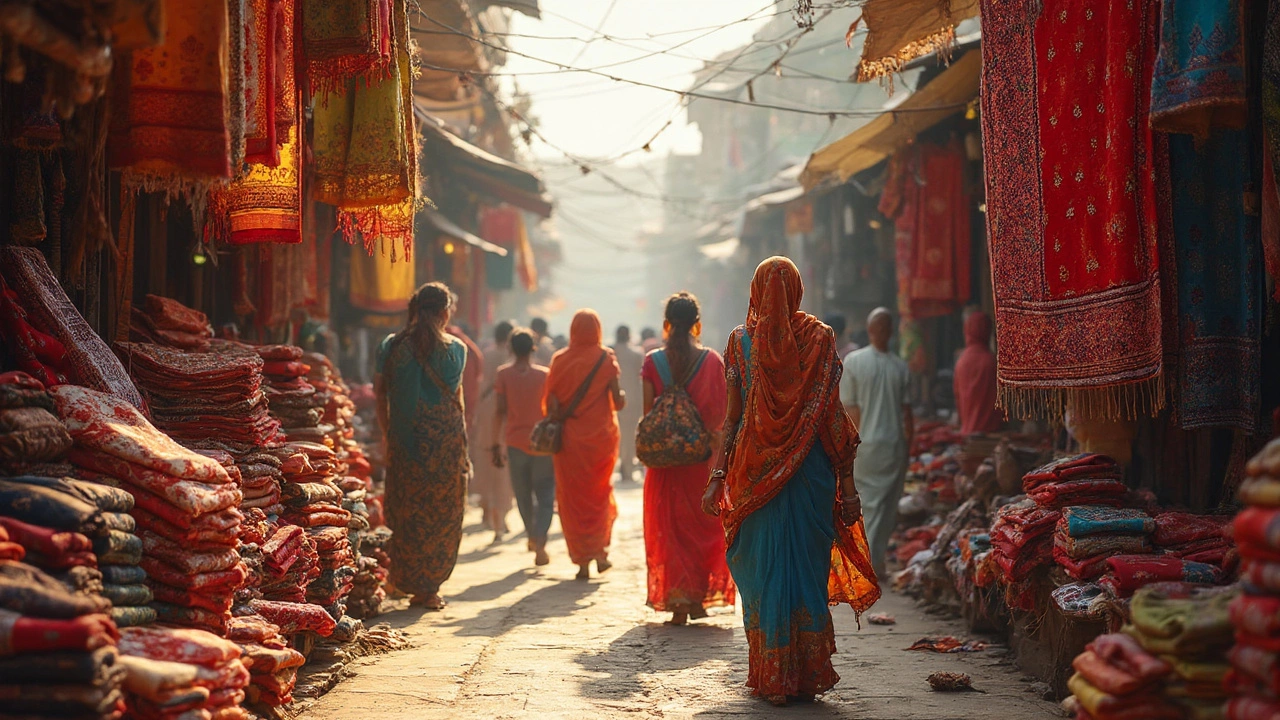- What Are the Most Demanded Processed Foods in 2025? Nov 11, 2025
- Profitable Manufacturing Business Ideas to Boost Your Earnings Jan 23, 2025
- Who Still Dumps Garbage in the Ocean: The Role of Plastic Manufacturers Apr 3, 2025
- Food Processing Unit Classification: Types and Examples Oct 25, 2025
- AI Chip Manufacturing in India: Who Makes Them and What's Next? Jul 28, 2025
Gujarat Cloth – What Makes Gujarat a Textile Powerhouse?
Ever wondered why so many Indian garments trace back to Gujarat? The state mixes cheap cotton, skilled weavers, and modern mills to churn out huge amounts of fabric. If you’re looking for quality cloth at scale, Gujarat is the place to start.
Key Fabrics Made in Gujarat
The first name that pops up is cotton. Gujarat’s climate grows long fibers that turn into soft, breathable yarns. Ahmedabad’s “Manchester of India” nickname comes from its cotton mills that have been running for over a century.
Silk is another big player. The Patola silk from Patan is famous for its bright colors and tight patterns. While Patola is hand‑woven, factories in Surat blend silk with synthetic blends to meet larger orders.
Denim lovers get a surprise too. Surat’s polyester‑cotton mixes are used by global brands for jeans that need durability and stretch. These blends keep costs low while staying tough.
Major Manufacturing Hubs and Companies
Ahmedabad leads the cotton game, hosting giants like Arvind Limited and Vardhman Textiles. Their plants combine old looms with automated cutting, so they can handle everything from basic tees to designer fabrics.
Surat isn’t just a diamond hub – it also houses big synthetic textile units. Companies such as Welspun and Alok Industries run massive facilities that produce polyester, viscose, and blended yarns for export.
Vadodara and Rajkot serve as secondary centers. Smaller firms there focus on niche markets like embroidery‑ready fabrics, organic cotton, and eco‑friendly dyes.
Most of these factories ship directly to Europe, the US, and the Middle East. That’s why you often see “Made in Gujarat” tags on affordable yet quality garments abroad.
What sets Gujarat apart is its logistics network. The state’s ports in Mundra and Kandla handle huge container volumes, cutting shipping time and cost for buyers worldwide.
If you’re a buyer, ask suppliers for their GST registration and export certifications. Those documents prove the cloth meets international standards and helps avoid customs hassles.
For small designers, many Gujarat mills offer “cut‑and‑sew” services. You send a pattern, they cut the fabric and stitch it, returning a ready‑to‑sell product. This saves you from renting a full production line.
Eco‑conscious shoppers should look for factories using water‑recycling and low‑chemical dyes. A growing number of Gujarat units have earned ISO 14001 certification, meaning they follow strict environmental rules.
In short, Gujarat blends cheap raw material, skilled labor, and modern infrastructure to deliver a wide range of cloth. Whether you need bulk cotton for t‑shirts or luxury silk for bridal wear, the state has a supplier ready to help.
Ready to source your next batch of fabric? Start by contacting the textile chambers in Ahmedabad or Surat—they can match you with vetted manufacturers and give you price lists within a day.
Gujarat Famous Cloth: The Story Behind India's Textile Powerhouse
- Aarav Sekhar
- May 25, 2025
Gujarat is a giant in the Indian textile scene, best known for its colorful and creative fabrics like bandhani and Patola. This article breaks down what makes Gujarat’s cloth unique, from the traditional techniques used to their global impact. Get familiar with must-know textile hotspots and find out which types of cloth you should check out if you want a real taste of Gujarat. Whether you're a buyer, a traveler, or just curious, you'll walk away with handy tips and surprising facts. The journey of Gujarat’s textiles is more than just fabric—it's full of culture, innovation, and craft.
